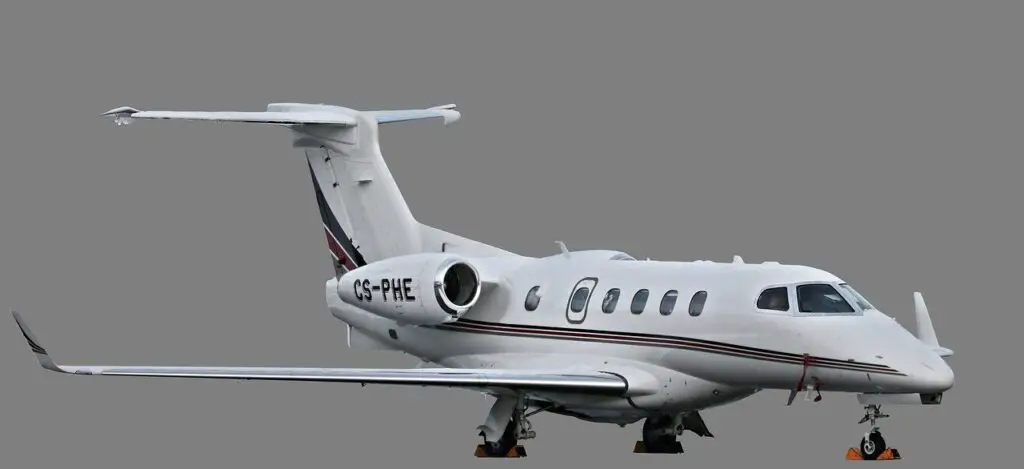It’s estimated that 2 million pets fly on airplanes every year.
That’s a lot of whiskers and paws in the air. Traveling with a dog can be difficult for some owners. Many of us would prefer not to do it. Planes may get us and our pets from A to B more quickly, but it can be a frightening time for animals especially if they’re flying in the aircraft’s hold.
Of course, some pets take to flying like naturals.
Some are also lucky enough to have owners that fly their own small planes. We’ve met private pilots who regularly take their dogs up in the air with them. You should definitely take a look at some of the adorable pictures of labradoodles and yorkies sitting in the co-pilots chair.
If your pet is about to take to the skies, you might want to ask does flying hurt a dog’s ears? After all, flying can hurt human ears and our pets have better hearing than we do.
Does Flying Hurt a Dog’s Ears?
Flying can hurt a dog’s ears. It doesn’t happen with every dog, but they’re as sensitive to changing air pressure as much as we are.
When a plane climbs or descends quickly the air pressure changes rapidly, too, and the ear can’t balance the pressure in time. That’s when you get that stuffy sensation in the ears. It might feel as if you can’t hear properly or that something is blocking your hearing. It can even be painful. Usually, we try to pop our ears to help equalise the pressure. You may have tried yawning or chewing. Some people suck on candies.
Dogs can benefit from the same kind of action. Owners can give them a treat during a plane’s ascent or descent. The act of the dog chewing should help alleviate some of the discomfort. It may also provide a sufficient distraction so that the dog focuses on the food rather than the stuffiness in its ears. Private pilots could ask a passenger to do this. You could also give the dog a chew toy and achieve a similar effect.
Do Dogs Need Ear Protection When Flying?
Of course, it’s not just altitude and changes in air pressure that can make a dog feel uncomfortable. Aircraft noise can sound louder to dogs. This can create stress or it could even damage the dog’s hearing. Whilst flying in-cabin on a commercial aircraft probably won’t require ear protection for your dog, you should consider it if you’re a private pilot.
Dog Ear Muffs for Flying?
You can buy dog ear muffs for flying. These are designed to reduce the noise reaching the dog’s inner ear and could help prevent hearing loss. These tend to be more popular with private pilots flying smaller planes than passengers on commercial airlines. Some dogs may not enjoy the sensation of having something over their head and ears. You may have to persevere a little.
One popular brand is Mutt Muffs. You can check them out on Amazon by clicking here.
According to Executive flyers, “They provide a noise reduction of between 25 and 28 dB, and use the same thick foam found in headsets designed for humans.”
They come in a range of sizes, too.
The article goes on to suggest advice that we’ve frequently seen posted on pilot forums: if your dog isn’t adapting to the earmuffs when they’re in the air, then let them experience the cockpit or cabin without them. Most dogs will realise how loud it is and then be far more likely to tolerate them during the rest of the flight.
Of course, this type of ear protection for dogs isn’t just for planes. You can also buy them to protect your pet from loud noises caused by fireworks, vacuum cleaners, thunderstorms, construction work, crying babies, loud music etc.
Some pilots have said that they put cotton wool balls into their pet’s ears but we wouldn’t recommend that in case they get stuck. The AOPA website advises against this too but says that pilots could use ‘pillow foam’ instead of cotton which is similar to ear plugs in people. It’s less likely to get stuck in the dog’s ears.
Does flying hurt a dog’s ears?
Dogs are as likely to suffer from ear discomfort during climbing and descending in an aircraft as humans are. You can try to mitigate this by giving them something to chew on during these key periods just before landing and after take-off. Private pilots might also benefit from putting ear muffs onto dogs to mitigate the dangers of exposure to loud noises. If the noise is too loud for you, then it’s probably too loud for your dog.
You Might Also Like to Read: Can I Buy a Seat for my Dog on an airplane? or What to do if your dog poops on the plane?

